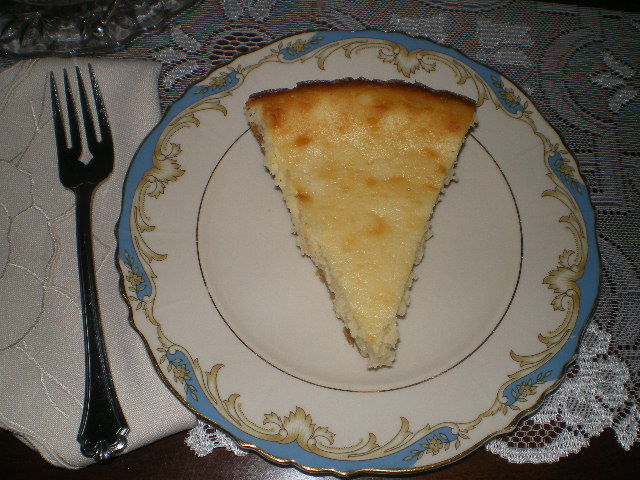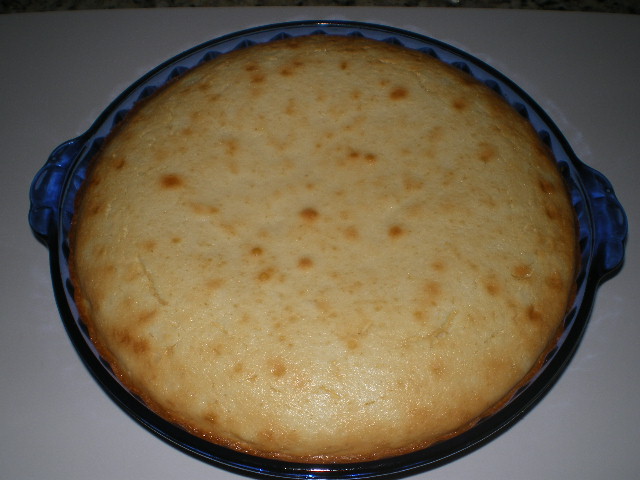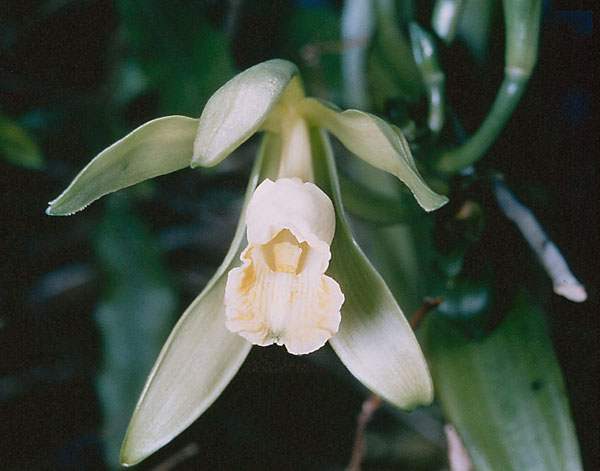
Vanilla planifolia orchid, also called the Flat-leaved Vanilla Orchid, is the one used for commercial vanilla production and is the only edible fruit of the orchid family. The vanilla planifolia plant produces an orchid flower that opens for only one day, though it may take as long as six weeks for the bud to develop into a flower. The orchid will flower in the morning and begin to wilt by early afternoon. Each flower has to be individually hand pollinated in order to fruit and since 1841 this method has been used.
For centuries, the vanilla bean extract was a cultural treasure enjoyed solely by the natives of Totonaca, the present state of Veracruz, in Eastern Mexico. The Persian, Macedonian, and Roman Empires all came and went without any of their rulers every tasting vanilla. For all these centuries, no one but God and the Totonacs knew about vanilla, this exquisite and delightful fruit of man’s creative refinement of God’s creation.
All this changed rather cruelly in the mid-fifteenth century, when the Totonacs were conquered by the Aztecs. Tribute was exacted from them, but once the Aztec overlords had tasted vanilla, they wanted it included in the tribute.
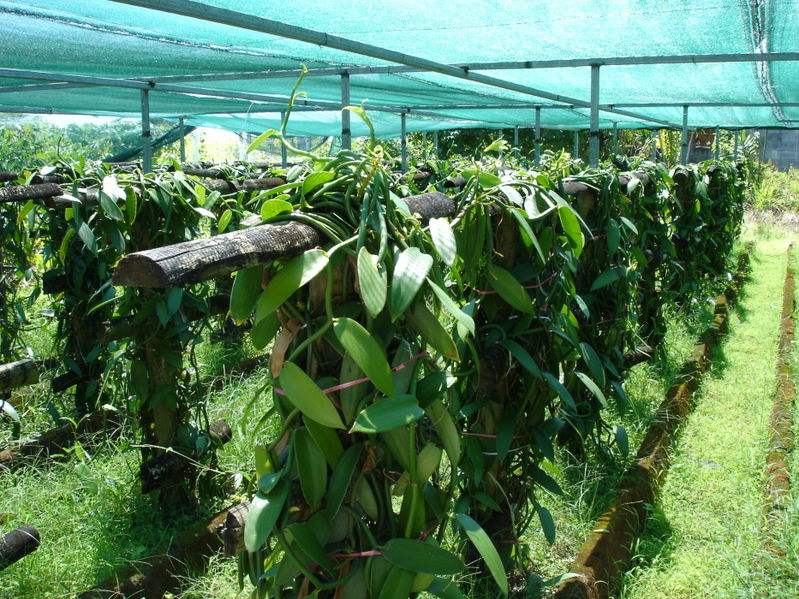
A Vanilla Plantation on La Réunion Island. Small trees are used for the vanilla vines to climb and to provide shade for the vines. The trees are planted about a year or more before the vanilla cuttings are set so that they can become well established. The vines are looped over the tree at the 5-foot level and brought back down to the ground. This makes it ideal as it keeps the vines within easy reach of the workers. If allowed to grow, the vanilla plant can reach 50 to 80 feet in height. As long as the vine can grow upward, it will not flower, so the tip of the vine is cut off 9 or 10 months before the flowering season. Photo by Bouba.
Vanilla’s cultural domain thus began to spread, and it expanded further with the arrival of Hernan Cortes and the Conquistadors to the shores of Mexico, in 1519. The subjugated Totonacs readily joined forces with the Spaniards, hoping to throw off the yoke of the hated Aztecs. But it appears that the Conquistadors were not introduced to vanilla by their new allies, even though Cempoala was one of their main cities. It seems that this occurred in Mexico City itself, where the Conquistadors tasted xocoatl, the vanilla-flavored cocoa drink enjoyed by the Aztec emperor Montezuma and his nobles. It filled them with wonder, and in no time, Cortes had sent it on to Spain, for the appreciation of Emperor Charles V and his court. From there it soon spread among the nobility of Europe.
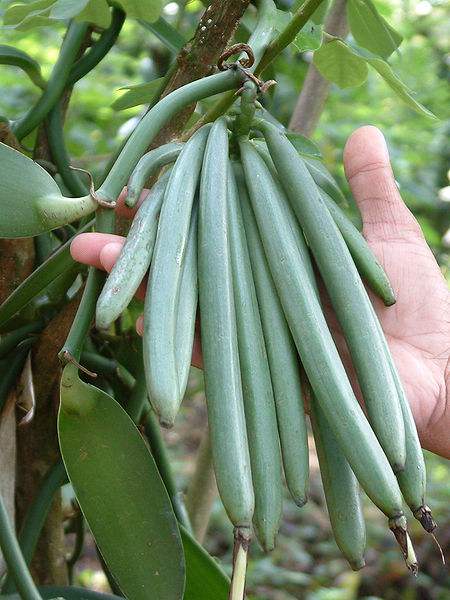
A cluster of mature vanilla pods, which look like green beans, are filled with tiny black vanilla seeds. Both the vanilla orchid and the vanilla bean are devoid of scent and the bean must be fermented to develop the scent and flavor. The bean will reach 7-9 inches in 4 to 8 weeks, but it takes 8 or 9 months for the beans to mature completely. The entire process from planting to market can take as long as five years. After the pods are harvested, they have to be cured. Photo by Sunil Elias
Once the method of hand pollination was discovered in the 19th century, vanilla cultivation spread from Mexico to Madagascar, Indonesia, and Tahiti, and then vanilla extract prices dropped substantially. This notwithstanding, because there is so much manual labor in the vanilla bean’s cultivation and processing, the extract is still the world’s second most expensive spice, after saffron. But it is largely affordable, and as a result, vanilla’s refined and aristocratic taste has now spread its cultural empire to the whole world, being enjoyed in homes and pastry shops everywhere.

Vanilla growing, curing, and processing is the most labor-intensive of all agricultural products in the world. It even exceeds saffron, the most expensive spice in the world. All the work is done by hand.
Cream Cheese Pie
Makes 1
Note from Maria Reisz Springer:
I usually buy a prepared Graham Cracker Crust in a foil pan at the store. I serve it still warm with a dusting of powdered sugar. The Cherry pie filling is intensified with a tsp or so of either rum or brandy, which enhances every bite with an extraordinary flavor and delectable experience.
Note from Nobility.org:
To make this recipe even more delicious is to make the graham cracker crust with Amaretti di Saronno by Lazzaroni Italian cookies.
Graham Cracker Crust Substitute
¾ Cup (about 20 to 25 cookies) of crushed Italian Amaretti Cookies (see note above)
1 Tablespoon, plus a teaspoon of melted butter
Crush cookies, mix with butter and spread on the bottom of a greased pie pan. Pour filling on top and bake.
Cream Cheese Mixture
2 – 8 oz packages of Philadelphia Cream Cheese *** (room temperature is best)
1 cup of sugar
Add 3 large eggs
Add 1 tsp of Vanilla Extract
Add 1 tsp of Almond Flavoring
*** Use Only Philadelphia Cream cheese, since it gives it the best taste. Others have been tried for this recipe and none compare to Philadelphia Cream Cheese.
Beat the 2 Philadelphia Cream cheese and the sugar together until light and smooth. Beat in one egg at a time and mix until completely blended. Add the Vanilla and Almond extracts, mix well and pour into the prepared Graham Cracker crust.
Bake in a preheated oven at 350 F, for about 40 minutes or until the top begins to rise and brown and shows several cracks around the edges.
The cracks and puffed top will settle down as the pie cools.
You can serve it when it still warm….warmer than room temperature…with a little Cherry Pie filling…that has had some Brandy or Rum added to it…and a dusting of powdered sugar….
Note from Nobility.org
This recipe tastes better if served the next day. Make it the day before serving, keeping it covered in the refrigerator and leave it out before serving.
( This recipe is taken from Maja’s Kitchen and published with the kind permission of Maria Springer. Her website is: www.majaskitchen.com)

